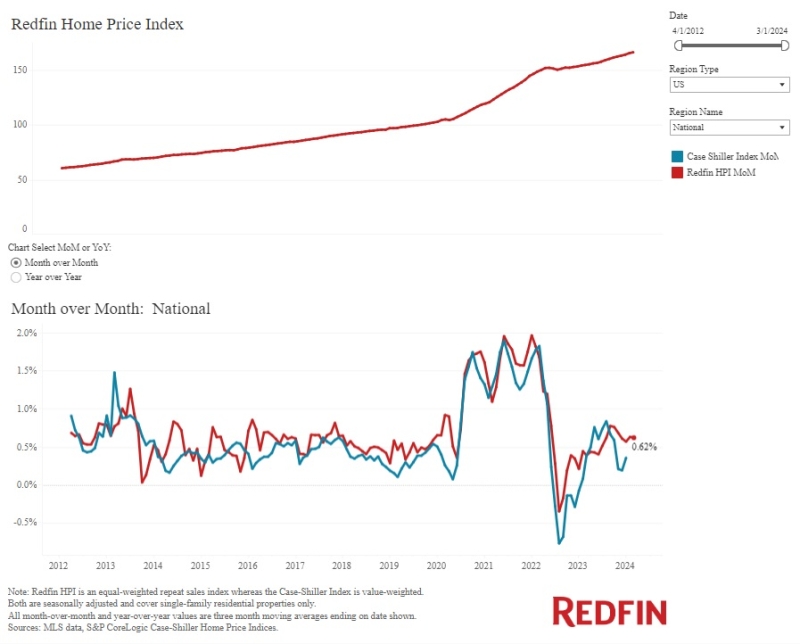E-mail and Web Design: Knowledge Is Power!

Once upon a time … marketing made its way to consumers via TV and radio ads. Then one day, we blinked and e-mail was standing there, the new superhero ready to take traditional marketing to its knees. Ever since online marketing began, promising new formats have taken over marketing attention and dollars. Many of those formats delivered and became essential to the media mix. At the same time, some of them overshadowed e-mail and claimed it was a dying player on the digital marketing stage. The reality is that e-mail marketing is, and will continue to be, a lucrative strategy. Having emerged as the centerpiece of marketing automation platforms, e-mail has evolved into a sophisticated marketing channel. The trick is to keep up with the ever changing devices that consumers use to view things online.
When you have a Web page, you want it to provide optimal viewing that works with a wide range of devices from desktop computers to tablets to mobile phones. This type of design is called Responsive Web Design (RWD), and it is one of the trends in business technology. More and more, people are using mobile devices for tasks that were once only possible on a desktop computer. It’s not just about updating social media or surfing, it’s everything—browsing, e-mail and even online shopping. Because mobile Internet usage is increasing, it is imperative that your Web site is mobile-friendly.
Perhaps you haven’t considered this before. In fact, not so long ago, it wasn’t even a concern. Maybe you have one site that’s designed for desktop users and a different site specifically designed for mobile users. Now it’s not only possible, but far more efficient, to have a site that works equally for both desktop and mobile users. Enter Responsive Web Design—users don’t have to fool around zooming or shrinking text or images on whatever screen they’re using. Content automatically adjusts to the screen of individual devices, making it easier and more convenient for people to read and navigate your site.
A Web site’s design should respond to each user’s behavior and environment based on screen size, platform and orientation. In techno-speak, that means that the practice consists of a mix of flexible grids and layouts. As a user moves from using their laptop to their tablet to their cellphone, your Web site must have the technology to automatically respond to the user’s preferences. It should automatically switch to accommodate for resolution, image size and scripting abilities. Having this in place eliminates the need for a different design for each new device on the market. If your Web site doesn’t function on mobile devices, your visitors will become frustrated and leave. High bounce rates mean low conversation rates and that’s just bad for business.
Responsive Web site Design will help you to stay ahead of your competition—with RWD, potential customers will be able to find you no matter where they are. So, catering to mobile device users by having a mobile-friendly site makes good business sense. If your competitors aren’t making use of responsive design, they’ll lose out on potential customers. That puts you ahead the game and gives you a “one-up” on winning over those customers.
Once you have the attention of customers and potential customers, you’ll want to connect with them on a personal level in order to keep their attention. Imagine you’re out for dinner with a group of people. Somebody orders shrimp; someone else orders steak with a baked potato; yet another orders Caesar salad with grilled chicken. Everybody wants something different; everyone has different tastes and expectations. The point is, your customers aren’t all the same and they don’t all want exactly the same thing. So, why market to all of them in the same way?
Utilizing database segmentation in e-mail marketing provides you with a way to diversify your marketing to match your customers. Your e-mail reputation will improve and you’ll achieve the results you’re looking for—the first and foremost of those is that your customers will be more likely to open your emails. E-mails that get opened are those that grab our attention because they offer something that appeals to us.
The ultimate objective of database marketing is to increase marketing efficiency. Through advanced analytical methods and the use of customer data, the aim is to take intelligent marketing actions that concentrate on those customers most likely to respond to the marketing campaign. There are all kinds of different ways you can segment your e-mail list that will enable you to run compelling e-mail campaigns. While each segmentation might work fine on its own, they work best when used in a composite with other segments, triggers and lead intelligence data. Since the whole point of segmentation is to provide the most relevant content to your e-mail recipients, you will need to collect the right information.
In a world of marketing overload, marketers understand that even the simplest grouping of their customers allows them to generate more effective advertising. The need for database marketing is clear: When customers receive a personalized and relevant offer, there is a much higher chance that the message will have an impact. That’s why it is critically important to tailor your messages and incentives and make them relevant and interesting for each individual customer. Database segmentation is a must-have in the world of e-mail marketing. Marketers who fully utilize it reap higher click-through rates and generate more revenue from their e-mail offerings than their non-segmenting competitors.
To build a successful system involves consideration of everything that goes into creating an environment of referral generation; being sure you’ve designed tactics for each element; having in place processes that support those elements. Not all leads are equal in value, so a system of rating clients and leads is essential to assure that appropriate levels of recognition and service are given to all levels of clientele. A system that produces constant referrals work unless it is supported by good ongoing client service strategies. When all of this is managed within a database, you’ll have everything you need to build techniques, reminders and functionality for conducting referral conversations and referred lead generation.
They key word there is “conversation.” Classical sales training taught that you should always deliver a strong sales pitch. However, when you use traditional sales language, potential clients cannot help but see you as a stereotypical salesperson. Clearly that’s a turn-off in this new millennium where people have access to a vast wealth of information, marketing and statistics. Begin a conversation instead—let clients know that you’re interested in them, in what they need, and suggest ways you can help them. Sure, your goal is to close the deal, but if you make that the focus, your client will likely feel pushed and rushed. If a client gives you objections or challenges, find out the reasons why rather than countering with a defense of your product. Your clients will appreciate you giving them the information they need to make the decision that’s right for them.
With that being said, Content Marketing is one of the most important terms for marketers to know, and most of us are familiar with it by now. Useful content should be at the core of your marketing—the idea being to engage your prospects. Even if you’re already doing that, how can you be sure that you’re getting it right? As search engine algorithms become better at identifying and ranking appropriate content, companies have greater opportunities when it comes to engaging in content marketing. Your content is the fuel that makes the search engine go. So, if you consistently provide fresh fuel your site will build authority with search engines, in turn giving your site better ranking which drives relevant traffic back to you.
Content Marketing is a great way to demonstrate your expertise. With a constant barrage of information and marketing ploys, it’s wonderful when we get content that’s actually relevant to our lives. All the best marketing ideas steer away from the hard sell. By giving your customers useful information that will assist them in making decisions, you are increasing your customer base and building relationships.
Imagine your emails as door-to-door salespeople, and the subject line is the knock on the door. Unless you’re instantly recognizable as an adorable urchin bearing those irresistible boxes of cookies, you won’t easily get a foot in the door. You need an initial line that says, “I’m worth listening to.” It’s guaranteed the door will be slammed shut in your face if you start with, “I’m selling …” But you might get an attentive ear two if you start with, “Give me two minutes to show you how your carpet can look brand new.” So it is with the e-mail subject line. If you don’t capture their attention in the seconds it takes to read it, it’s going in the trash folder. Your subject line determines whether or not the reader will decide to open your e-mail.
There’s no magical formula to writing a subject line. You’ve got this well-crafted, interesting e-mail, but everything hangs in the balance because of your e-mail subject line—writing subject lines is hard! How do you get people to open your e-mail, what will get more clicks, win more clients … oh, the pressure! It’s exasperating. What in the world is an email marketer do?
►Know your target audience. What will interest them?
►Keep the subject line as straightforward as possible. Be specific. People are busy and busy people don’t like guess-work and surprises. Plus, how are they going to know if they’re interested enough to keep reading if they don’t know upfront what that interest is?
►Don’t ask yes/no questions. If the immediate reaction is “no!” they’re not going to open the e-mail and read it.
►Don’t use jargon. Although it’s easier to use the catch phrases that you’re used to, those same phrases may be lost on some people.
►Steer clear of subject lines that can be perceived as threatening, for example: “Last chance! Don’t miss out!” Instead, go for the positive. Turn “don’t miss out” into “great opportunity” and your subject line goes from seeming threatening to confident and positive.
►Avoid using promotional phrases or obvious gimmicks. Spam filters nab things for a variety of reasons, so if your subject line has even a hint of the odor of spam, your e-mail will likely go ignored. Although specific words are often the culprit, spam alarms are also set off by things such as using all caps, exclamation points, promising free product, etc.
Most brands have some kind of e-mail marketing platform as part of their overall marketing strategy. But consumers can spot one-size-fits-all, spammy promotional messages from a mile away. Most consumers check their various online media and feeds throughout the day—a real-time marketing e-mail based on a pertinent local event or news story is more likely to be read.
In the constantly-evolving world of marketing much has changed in the way brands and consumers communicate, but email marketing is still a trusted and versatile marketing tool. E-mail consistently demonstrates its exceptional ability to drive measurable results. With the availability of things like RWD, Database Segmentation and Content Marketing, e-mail is a solid performer that is only getting better.

Brent Emler is director of sales and marketing at Velma.com, a customizable marketing software provider exclusive to the mortgage industry. He may be reached by e-mail at [email protected].
This article originally appeared in the September 2015 print edition of National Mortgage Professional Magazine.





